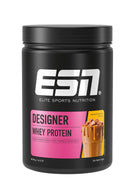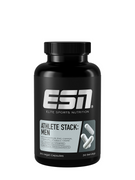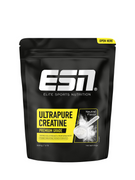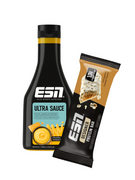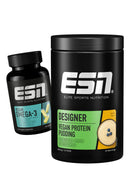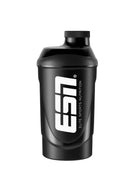Welche Aufgabe übernehmen Omega-3-Fettsäuren im Körper?
Fettsäuren können auf verschiedene Arten unterschieden werden. Eine häufig genutzte, allerdings überholte Kategorisierung stellt die Unterteilung in pflanzliche und tierische Fette dar. Damit wollte man dem Verbraucher eine einfache Systematik an die Hand geben, die zwischen gut (pflanzlich) und schlecht (tierisch) unterschied. Ganz so einfach ist es in Wirklichkeit allerdings nicht.
Pflanzliche und tierische Fette bestehen beide aus gesättigten, einfach ungesättigten und mehrfach ungesättigten Fettsäuren, wobei die Verteilung unterschiedlich gewichtet ist. Tierische Fette enthalten häufig einen höheren Anteil an gesättigten Fetten, was ihnen in der Vergangenheit einen schlechten Ruf einbrachte. Wer allerdings seine Kalorienbilanz beachtet und abwechslungsreich isst, hat keinen Grund tierische Fette prinzipiell zu vermeiden.
Sinnvoller ist die bereits genannte Unterscheidung zwischen gesättigten, einfach ungesättigten und mehrfach ungesättigten Fettsäuren. Während die ersten Vertreter zur Energiegewinnung genutzt werden, dienen mehrfach ungesättigte Fettsäuren im Körper in erster Linie als Baustoff. Die beiden wichtigsten Vertreter stellen Omega-3- und Omega-6-Fettsäuren dar. Die Zahlen drei und sechs beschreiben dabei, an welcher Stelle die Fettsäure erstmals eine ungesättigte Verbindung besitzt, wobei vom letzten Kohlenstoffatom aus, der Omega-Position, gezählt wird. Das erklärt dann auch den Namen der beiden Fettsäuren. Doch diese Unterscheidung ist nicht nur Makulatur. Mehrfach ungesättigte Fettsäuren dienen nicht nur als Baustoff für Zellwände, sondern stellen auch die Grundlage sogenannter Eicosanoide dar, bei denen es sich um hormonähnliche Stoffe handelt.
Während Hormone an einer Stelle im Körper (beispielsweise Schilddrüse oder Nebenniere) gebildet und schließlich zum Wirkungsort transportiert werden müssen, wirken Eicosanoide als Signalmoleküle in der jeweiligen Zelle, die diese selbst produziert. Eine Aufgabe dieser Signalmoleküle ist die Kontrolle von Entzündungen im Körper. Während Omega-6-Fettsäuren zu entzündungsfördernden Signalstoffen verarbeitet werden, dienen Omega-3-Fettsäuren als Grundlage für entzündungshemmende Eicosanoide. In diesem Zusammenhang sollte betont werden, dass Entzündungen generell nichts Schlechtes sind.
Entzündungen sorgen im Körper dafür, dass die entsprechenden Bereiche stärker durchblutet und mit Helfern des Immunsystems geschützt werden. Schließlich entstehen Entzündungen erst einmal dort, wo Verletzungen auftraten. Es ist daher wichtig, dass der Körper sowohl Stoffe besitzt, die Entzündungen starten als auch Entzündungen hemmen können. Ein Problem wird dies erst, wenn die fördernden und hemmenden Eicosanoide im Ungleichgewicht sind.
Was ist bei der Omega-3-Quelle zu beachten?
Das entscheidende Verhältnis der Omega-3- und Omega-6-Fettsäuren ist nicht nur von der reinen Zufuhr abhängig, sondern auch von der Art der Quelle. Im Körper müssen beide Fettsäuren noch weiterverarbeitet werden, um zu Eicosanoiden zu werden. Die beiden Fettsäurearten konkurrieren also miteinander und bei einer zu hohen Omega-6-Zufuhr werden weniger Omega-3-Fettsäuren weiterverarbeitet. Eine gute Wahl stellt daher Fischöl dar, das bereits reich an den Weiterverarbeitungen Eicosapentaensäure (EPA) und Docosahexaensäure (DHA) ist, welche für die Herstellung der Botenstoffe notwendig sind.
Pflanzliche Omega-3-Fettsäuren enthalten in der Regel kein EPA und DHA, sondern eine dritte Form, die Alpha-Linolensäure (ALA). Diese wird allerdings nur zu 0,1 bis 0,5 Prozent in DHA weiterverarbeitet und ist entsprechend eine wenig geeignete Quelle. Während der Eiweißbedarf somit leicht mittels veganen Proteinquellen gedeckt werden kann, stellt sich die ausreichende Omega-3-Zufuhr mit Hilfe von pflanzlichen Fetten als schwierig dar. Walnüsse, die beispielsweise häufig als gute pflanzliche Omega-3-Quelle genannt werden, enthalten auch sehr viele Omega-6-Fettsäuren und sorgen damit für keinen Ausgleich der Verhältnisse. Aber auch Sonnenblumenöl oder Margarine enthalten häufig viele Omega-6-Fettsäuren, so dass spätestens jetzt klar sein sollte, warum pflanzliche Fette nicht pauschal besser als tierische Fette sind.
Ein tierisches Lebensmittel, das häufig als gute Omega-3-Quelle hervorgehoben wird, ist fetter Fisch wie Lachs. Das magere Thunfischfilet (aus der Dose) ist also keine Omega-3-Quelle, wie es immer wieder einige Trainierende vermuten. Hierzu sollte man außerdem wissen, dass der Anteil an Omega-3-Fettsäuren natürlichen Schwankungen unterliegt. Die Fische bilden, ebenso wie der Mensch, die Omega-3-Fettsäuren nicht selbst, sondern können diese nur in Abhängigkeit von der Fütterung ansammeln. Wie hoch der Anteil an EPA und DHA dann schließlich ist, kann nur schwer beurteilt werden. In der Literatur findet man Zahlen von bis zu 2,5 Gramm pro 100 Gramm Lachs, was zugegeben eine große Menge ist. Gleichzeitig wird allerdings auch immer wieder betont, dass dieser Wert in den letzten Jahren immer stärker abgenommen habe.
Ein weiterer Nachteil des Ganzen ist, dass nicht jeder mehrfach die Woche fetten Fisch essen mag, zumal Lachs nicht unbedingt günstig ist. Neben der Tatsache, dass man nicht weiß, wie der Fisch, den man kauft, gefüttert wurde, sollten zudem die bereits angesprochenen natürlichen Schwankungen beachtet werden. Die letzten Gedanken sollten nicht missverstanden werden. Lachs ist eine gute Omega-3-Quelle, allerdings nicht für jeden die beste und vor allem praktischste Lösung. Eine sinnvolle Alternative stellen Omega-3-Fettsäuren in Kapselform dar. Bereits zwei bis drei Kapseln pro Tag sind eine gute Basis für eine ausreichende Versorgung.
Darüber hinaus enthalten unsere Kapseln die hochwertige Triglycerid-Form des Fischöls. Viele günstige Produkte verwenden dagegen ein Ethylester, das nur schlecht vom Körper aufgenommen werden kann. Omega-3-Kapseln stellen somit eine sehr gute Quelle für die essentiellen Fettsäuren dar, wenn man auf eine hochwertige Qualität achtet.
Wie weiß ich, ob ich genügend Omega-3-Fettsäuren aufnehme?
Die bisherigen Ausführungen führen allerdings zu einer letzten Frage: Woher weiß ich, ob ich ausreichend mit Omega-3-Fettsäuren versorgt bin? Hier hilft die Untersuchung des Omega-3-Index-Wertes.
Dazu wird der Gehalt von EPA und DHA in den roten Blutkörperchen und nicht etwa im Blutserum gemessen. Dieses Vorgehen erlaubt eine längerfristige Aussage über eine ausreichende Omega-3-Zufuhr als beispielsweise die Bestimmung des aktuellen Blutwertes. Im Zuge der Auswertung entsprechender Labore erhält man eine ausführliche Auswertung des Omega-3-Omega-6-Verhältnisses, was in etwa 50 Euro kostet, nachdem das Blut zuvor beim Arzt entnommen wurde. Wer sich die Kosten sparen will, sollte auf eine ausgewogene Ernährung achten und zwei bis drei Super Omega-3-Kapseln pro Tag nutzen. Dies sollte in der Regel zu optimalen Werten führen, so dass der Körper jederzeit ausreichend versorgt ist.
